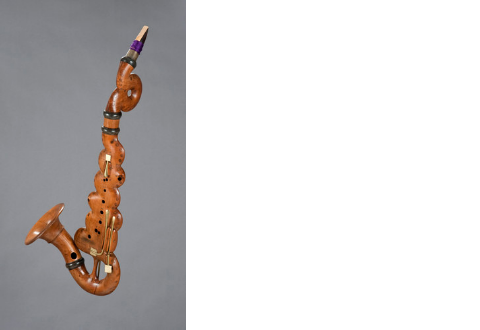Adolphe Sax (1814–1894), who worked first in Brussels and later in Paris, built up his own collection as part of his activities as a musical instrument maker. This collection was put up for sale when his company went bankrupt in 1877.
Originally, it comprised 467 instruments from different periods and geographical regions, but it was later dispersed. One of the buyers at the 1877 sale was Victor-Charles Mahillon, curator of the Musée instrumental du Conservatoire, founded in the same year.
Today, 33 instruments from Adolphe Sax’s private collection are preserved at the MIM. Among them...
Adolphe Sax (1814–1894), who worked first in Brussels and later in Paris, built up his own collection as part of his activities as a musical instrument maker. This collection was put up for sale when his company went bankrupt in 1877.
Originally, it comprised 467 instruments from different periods and geographical regions, but it was later dispersed. One of the buyers at the 1877 sale was Victor-Charles Mahillon, curator of the Musée instrumental du Conservatoire, founded in the same year.
Today, 33 instruments from Adolphe Sax’s private collection are preserved at the MIM. Among them are four instruments collected by Guillaume-André Villoteau (1759–1839) during Bonaparte’s expedition to Egypt, which rank among the oldest surviving Arabic instruments. In addition to the non-European pieces, the collection includes Sax instruments from his own workshops, those of his father Charles-Joseph, and those of competing makers.
